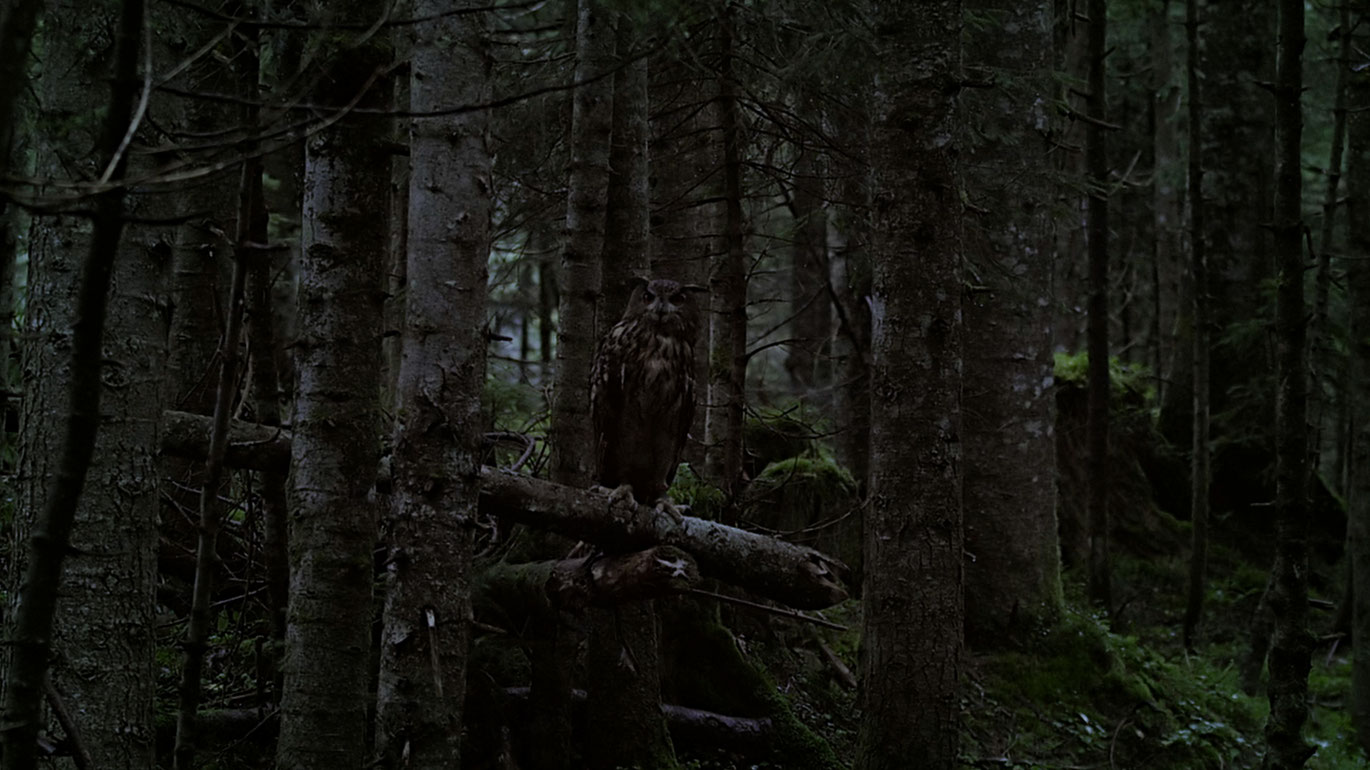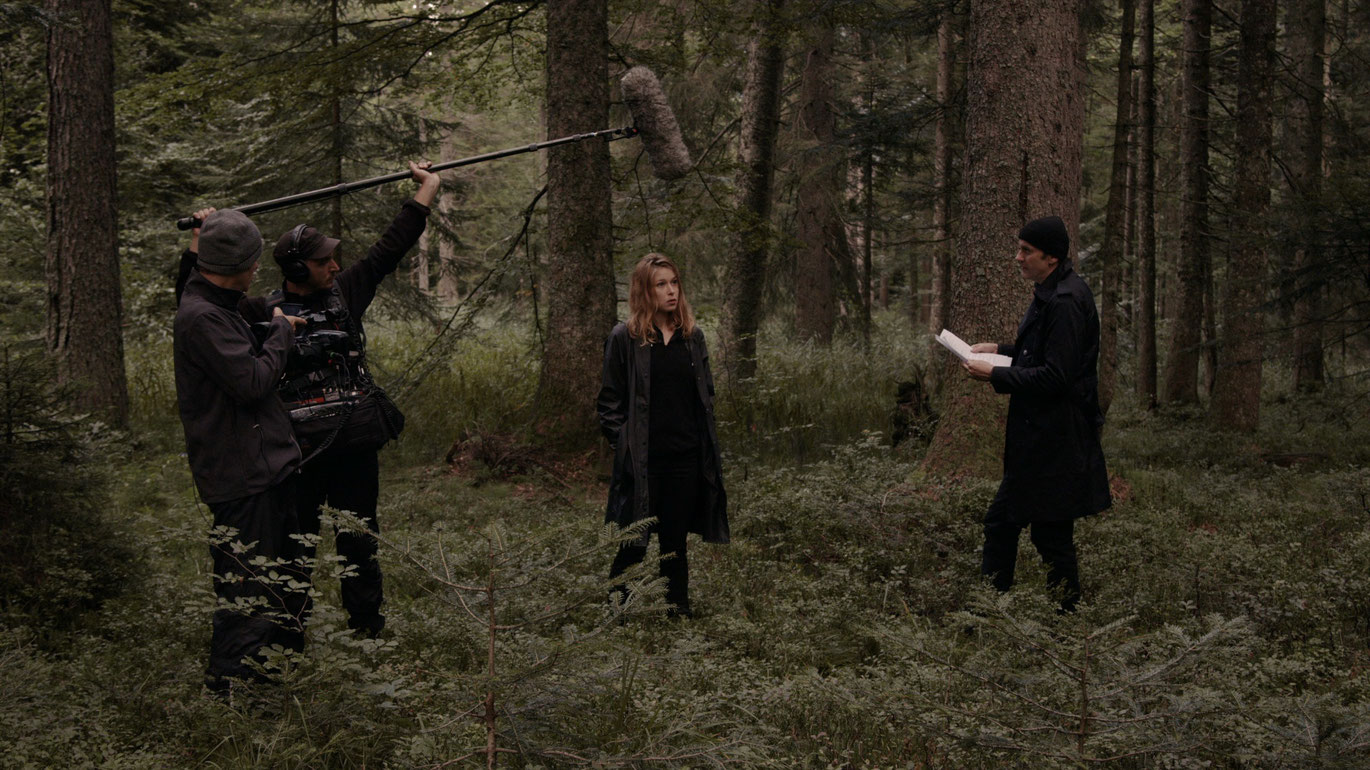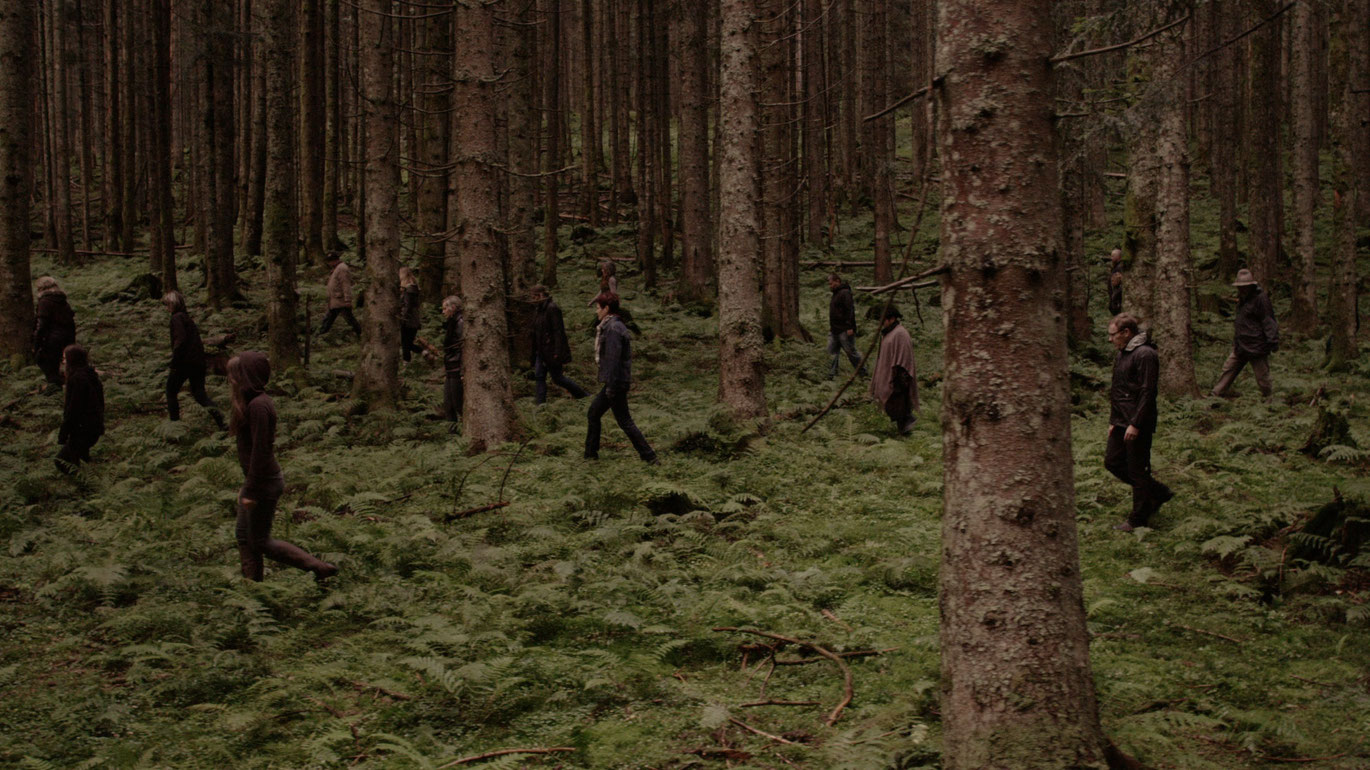Scenes from a Forest
A young woman in a dark, shiny raincoat is alone, underway in the woods. Later, while walking she will give a long interview. A profile of “Alva Aktivismus” from Leipzig forms from the catalogue of personal and political questions that she answers a young man and his small recording team. The monosyllabic actor serves as a projection surface and model. A woman’s voice from off screen offers another, multifaceted (life) story.
Thus, right from the start, Annja Krautgasser’s Scenes from a Forest plays with several levels—and can be described as a small compendium of forms of filmic expression. It begins with silent slow-motion takes. Following static, landscape panoramas are a plan sequence of horizontal movements, hand-camera actions, and close-ups, behind which the environment disappears. In a scant half hour, the film plays through various genres.
Scenes from a Forest is a literary essay, (fictional) portrait of a woman, landscape study, and nature documentary, while also containing trace elements of drama, horror, and mystery.
The medium and its history are also ultimately discovered as points of reference when Krautgasser refers explicitly to pre-images at three points: the long interview scene is identified as a re-enactment of the interview in Jean-Luc Godard’s One Plus One. The other two references are the pilgrimage scene that Ben Pointeker directed from Forst by Ascan Breuer, Ursula Hansbauer and Wolfgang Konrad; and the demon invocation from Tropical Malady by Apichatpong Weerasethakul. Agnès Hoffmann, author of the novel "so viele Tage", which provides the off-screen texts, has, incidentally, already published on this process in Leipzig’s Nachsteller Verlag.
(Isabella Reicher)
Translation: Lisa Rosenblatt
Waldszenen
2015
Austria
30 min
Avantgarde/Arts
German
English



